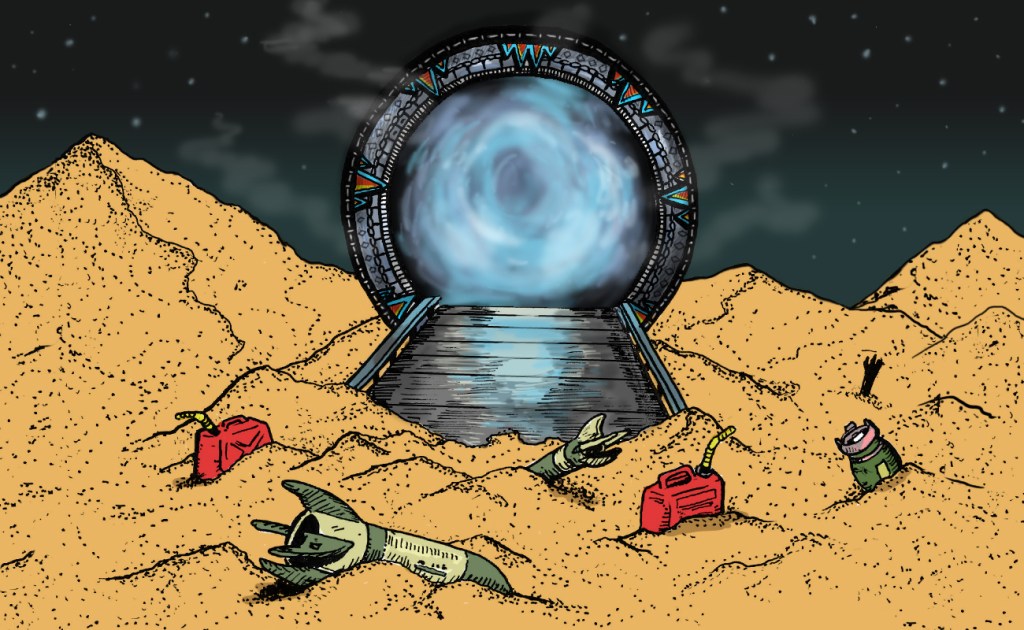Photo via The Flat Earth Society’s Flickr
In 1881, English writer Samuel Rowbotham published Zetetic Astronomy: Earth Not a Globe – a 430-page book in which he affirmed that Earth is flat. A hundred and thirty years later, despite all the silly science that daily proves to us that the land we step on is actually spherical, his work is still spawning mini movements.
Videos by VICE
After Rowbotham passed away in 1884, Lady Elizabeth Blount, who admired his work, established a Universal Zetetic Society whose objective was “to carry on the work of the master”. With their beliefs largely based on a rather subjective reading of the Bible, after WWI the organisation gradually lost influence and eventually disappeared.
Yet, the idea of a disc-shaped Earth has not completely vanished; The Flat Earth Society are a modern group dedicated to promoting Rowbotham’s ideas and to trying to convince sceptics like me. I wanted to make sure they were serious, so I got in touch with some of them via their online forum.
Image courtesy of The Flat Earth Society
VICE: Hi guys, can you clarify your Flat Earth concept?
People from the Flat Earth forum: Welcome on board. Our group carries on Samuel Rowbotham’s work. In his book Zetetic Astronomy: Earth Not a Globe, he demonstrates that our planet is flat. He died 130 years ago but his opinion survived him. Like him, we base our reflection on the zetetic method – an alternative to science, which asserts that sensory observations prevail over scientific theory. Through logical deduction and empirical data, we maintain that the Earth is flat.
OK but how would you explain we can’t see the same stars depending on which hemisphere we are?
We all know some stars are visible from the Southern Hemisphere and not from the Northern Hemisphere, but the reason behind that is electromagnetic and optical acceleration through an aetheric whirlpool. We believe in cosmic speed, but in an esoteric sense.
If the Earth was flat and if you put two sundials in two different places, they would have the same shadow, wouldn’t they?
Certainly not! Observe the floor in your kitchen. It is flat isn’t it? Imagine there is a ceiling light and you just put a stick in a vertical sense. If the stick is perpendicular to the floor, the length of shadows will depend on its position in the room.
It’s just trigonometry, which also works on a flat Earth. This also proves that the Sun is closer than what the scientists say.
Image courtesy of The Flat Society
What do you mean? How far do you think the Sun is?
It’s about 2500 miles above us. [The distance between the Earth and the Sun, which astronomers call the Semi-major Axis is alleged to be 93 million miles.]
If I take the kitchen example again, it’s pretty hard to compare the Sun with a light bulb as the bulb is much smaller than the kitchen whereas the Sun weighs about 333000 times what the Earth does.
You’re wrong. The Sun and the Moon have the same dimensions. Both stars have a diameter of 32 miles.
How can you be so sure?
When you observe the Sun, it’s always located between the tropic of Cancer and the tropic of Capricorn, which means a distance lower than 3000 miles. How can you explain that a star, whose diameter is 865000 miles according to scientists, could be seen between both tropics? It is just a logical deduction.
Image courtesy of The Flat Earth Society
If you look through a telescope, you will see that every planet and star in the universe is spherical. Why would the Earth be an exception?
Don’t go too far in sophism. It’s not because every planet seems spherical that the Earth is spherical as well. Our planet is very special. First, it is inhabited. The Ancient Greeks used to think the Earth was round, because they believed every celestial body was a perfect sphere, including the Earth. They just strengthened their assertion with observation.
OK, but that doesn’t prove anything. Is there any other generally accepted idea you believe is false?
Yes, of course. For instance, the Sun is a spotlight, which shines and lights up a defined area. If you are outside the luminous flux, it’s impossible to the Sun and it’s dark. When you watch a sunset, it’s just the Sun that stops shining for you.
We also think that the North Pole is located in the centre of the Earth and beyond the border of the planet, there is the Antarctic. What you think is the southernmost continent, is actually an ice wall which surrounds the Earth. This ice wall is 164 feet tall and holds back water. But we still have debates about what there is beyond the wall.
OK, I see. Thanks a lot guys.



